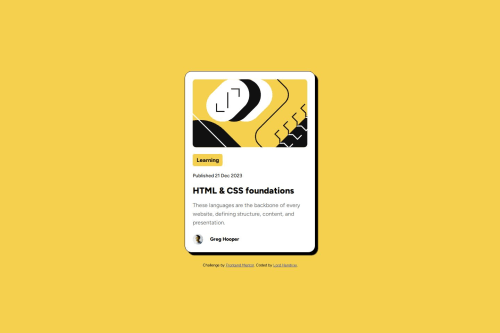
Solution retrospective
- I am happy i get to practice what i've learnt so far.
- I would try as much as possible to always build something and test my knowledge against challenges and i hope to overcome them.
- Honestly, i was quite a challenge figuring out how to structure my HTML in a way that CSS flexbox can be applied.
- I had challenges with the mobile-first workflow with CSS media queries but luckily W3schools was there to help.
- I would really appreciate general review of my code on how to write more concise and clean code.
- I would like help with my judgements in terms of the responsiveness of my project especially with smaller screens.
Please log in to post a comment
Log in with GitHubCommunity feedback
- @technoish
Hi, great work on your code! It’s clean and well-structured. Here are a few suggestions to improve it:
Semantic HTML: Use semantic elements like <header>, <footer>, or <section> instead of <div> where appropriate. It improves readability and accessibility.
Font Sizes: Use relative units like em or rem for better scalability on different devices.
Media Query: Great job with responsiveness! Test on various devices to ensure everything scales properly.
Code Cleanup: Remove unused styles like /* font-weight: <weight>; */ to keep your code tidy.
If this helps, feel free to mark it as helpful. Happy coding! 😊
Join our Discord community
Join thousands of Frontend Mentor community members taking the challenges, sharing resources, helping each other, and chatting about all things front-end!
Join our Discord